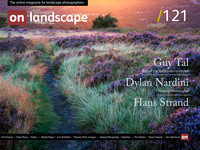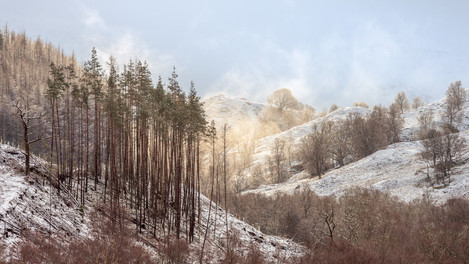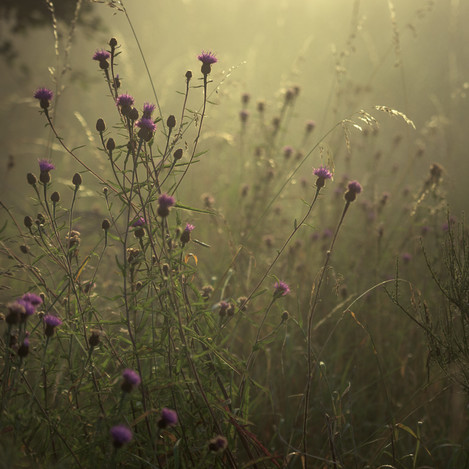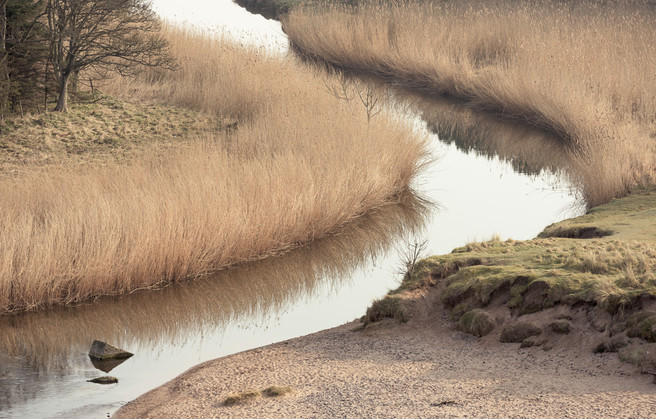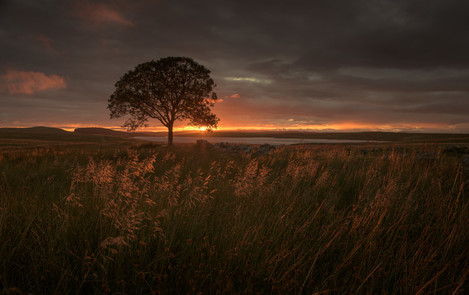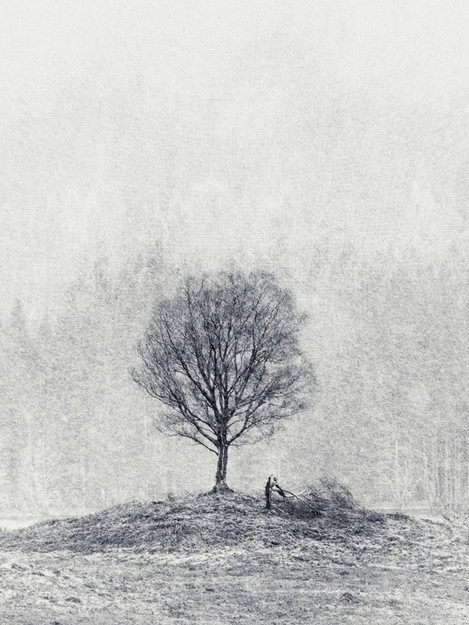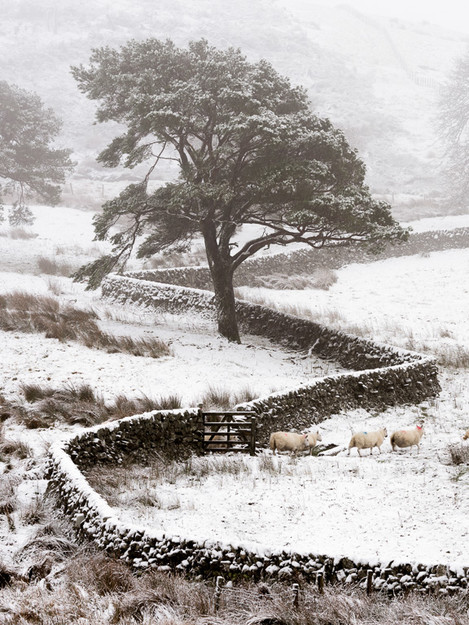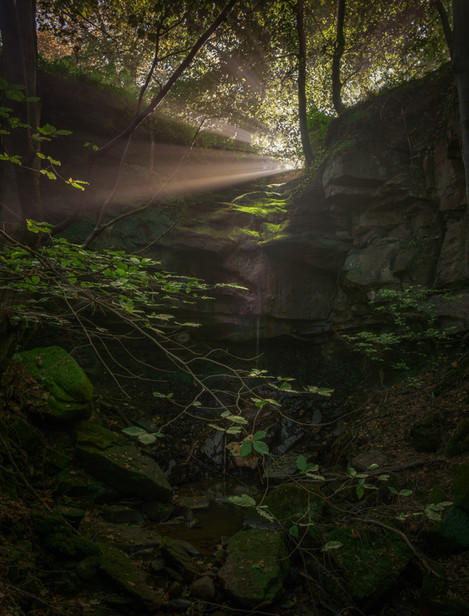Featured Photographer

Dylan Nardini
Dylan Nardini is a landscape photographer based in South Lanarkshire, Scotland. Practising photography for over 30 years he has focused on shooting the outdoors since 2014, both in his local and national landscape. Widely published,, he was also the winner of 2021 British Photography Awards Landscape category and The Scottish Landscape Photographer of the Year overall winner 2021. A family man, when he’s not found shooting the landscape with his Nikon D850, Sony RX100ii or many film cameras, he also drives freight trains.

Tim Parkin
Amateur Photographer who plays with big cameras and film when in between digital photographs.
I saw Dylan's work on a recent fund-raising auction for Marc Elliott where he had contributed the snowy tree photo "Winter's Stand" below. I immediately took a look at his website and was impressed at the range of photography on show (although I think a bit of editing might be in order - 520 images is a little too much for people to trawl through and most people will only see the top selection and probably miss some of the best photographs). Anyway - I hope you like the photographs as much as I did.
Can you tell me a little about your education, childhood passions, early exposure to photography and vocation?
Born in South Lanarkshire, Scotland, I left school with 3 Highers and 7 O’levels. I, like many others, fantasised about becoming a professional footballer. I played at a decent level and had played for the Scottish Schools National team but, to be honest, I hadn’t the proper desire or dedication to take it any further. I grew up influenced by my father who is a successful Scottish artist and songwriter. I may have inherited some of his drawing skills but like football, I didn’t have any desire to develop it in any way. Although it was while studying Art & Design for my Higher that I first got introduced to photography by my teacher Mr McBride. He showed me the basics of camera operation and B&W developing/printing. His stay at the school was short though, and I was soon left to develop my photography on my own as none of the other teachers had any experience.
I briefly studied Civil Engineering at University before taking a year break, hoping to return and complete the degree. On this sabbatical, I worked here and there to pay my way and stumbled into a job on the railway. Expecting it to be a short experience I find myself still there 23 years on, driving freight trains around the country. It might be ‘Every boys dream job’ but it was never mine, although, it’s a job and a job that has been very kind to me in many ways.
What are you most proud of in your photography?
There isn’t anything specific I would say I am particularly proud of but perhaps I’m more surprised that I have managed to progress and develop my photography mainly through determination and desire. I was always the type of person that would easily lose interest in something after a short time but throughout my year's photography has been firmly in my mind. When I started working full time, photography took a bit of a back seat, though, while I enjoyed the social side of my 20’s.
It was in my 30’s I made a decision to catch up on everything I’d missed over the previous ten years. I bought a cheap point and shot digital camera and got acquainted with basic developing software. I still used the 35mm film camera to an extent, but I’d play around with the PC similar to my darkroom days at school I suppose. I later studied two photography courses on a Saturday morning at Glasgow’s College of Building & Printing and eventually got my first Digital SLR (Nikon D80) and then studied Photography from home on an OCA course. It has been this continued interest and desire that has allowed me to learn and find direction in my photography to a point I feel settled in the path I am on while excited at the mystery of where it will lead.
In most photographers lives there are 'epiphanic’ moments where things become clear, or new directions are formed. What were your two main moments and how did they change your photography?
I for the first time got completely caught up at the moment, and when the buzz hit me I distinctly remember standing up looking around with the wind and sea spray battering my face, saying, ‘This is what I want to do’. I hadn’t produced anything memorable, but I eventually left that beach grinning like a Cheshire Cat, my path was clear and the excitement was like a drug. *See image Croy Shore* It is not a memorable image, but this shot is special to me as it’s about the effect the afternoon had on me and not it’s quality.
Another moment that sticks in my mind was when I was 16 and in Italy visiting family. I went for a wander with my cousin and had taken my 35mm Film Praktica. We stopped at Il Duomo in Barga, a small town in the hills of Tuscany where I took a shot of the view out towards La Pania della Croce, the predominant mountain of the area. It was a subconscious moment with no thought involved just a quick snap and move on. It was when I got home and developed/printed the shot in my makeshift darkroom/shed that it became memorable. It was to be an image that I first remember receiving praise for, especially from my artist and art teacher Father. He raved about the composition and how it had been framed, the shapes of the trees and their position in the shot, etc.
This was the first time I was made aware of composition before hand I didn’t understand it or had even consciously used it. The praise I got, triggered the first thought of consciously trying to make an image through the use of a camera, before hand I had simply pressed the shutter and hoped for the best.
Tell me about why you love landscape photography and what impact it has had on your life.
I love experiencing my surroundings and observing light in its many forms and this for me is what landscape photography allows me to do and hence why I love it. From viewing others work, checking the weather, locations and observing light shaping the landscape, being out in remote places all alone and in all conditions, choosing lenses and filters that may help capture the scene as desired, to seeing the images come to life in processing. Train driving through all hours of the day in all kinds of weather and through a variety of landscapes helps feed this passion.
The buzz I get from the whole process is in a way like a drug, I get a little anxious if I can’t get out but there is always a spring in my step if I do and I get my fix. I don’t find this to be a hindrance in any way, more like a constant rush, which is a huge appeal and something that has had a huge impact on my life.
Could you tell us a little about the cameras and lenses you typically take on a trip and how they affect your photography?
My main camera is the Nikon D810 accompanied in my bag with the Nikkor 24-70mm f/2.8, Zeiss 25mm Distagon f/2.8 ZF2, Sigma 70-200mm f/2.8, Tokina Macro 100mm f2.8 and a newly acquired Nikkor 50mm f/1.2 Ai which is fast becoming a favourite. Generally though if I’m going wide, I love the Zeiss, it’s fantastic although recently I have been consciously trying to tighten the crop hence the 50mm purchase. From afar the Sigma is good, it can help narrow the view to bring out little details that may be lost in a grand vista.
This year I also managed to get a hold of an Infrared converted Nikon D80 which has squeezed into the bag too and can be very useful when the light has become too harsh, I’m still experimenting with it but so far its good for a fresh perspective when my creativity has maybe become a little exhausted. I also have a Sony RX100ii that comes with me almost everywhere and is especially good for work down time.
What sort of post processing do you undertake on your pictures? Give me an idea of your workflow.
90% of my editing is done in Lightroom CC. I don’t spend too long on an image if I do I usually bin it realising it’s obviously not right to start with as I’m trying too hard to make something from it. Very generally I will start with Lens Corrections, adjust Highlights/Shadows, adjust white balance and Hue to suit, push whites and blacks to just within their limits and crop to preference.
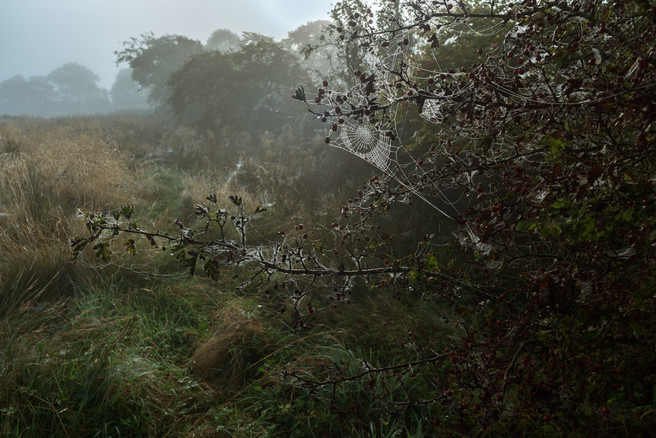 I would then tidy up any dust etc. and if a colour image would export to Nik Color Efex Pro 4 to give a small colour boost with Pro Contrast and a very very slight adjustment to Colour Contrast Range, overall to just lift the image a little. For monochrome images, I use Nik Silver Efex Pro 2 for initial conversion then finish off in LR CC. I don’t use Photoshop that often unless trying to create a multiple exposure which is quite rare.
I would then tidy up any dust etc. and if a colour image would export to Nik Color Efex Pro 4 to give a small colour boost with Pro Contrast and a very very slight adjustment to Colour Contrast Range, overall to just lift the image a little. For monochrome images, I use Nik Silver Efex Pro 2 for initial conversion then finish off in LR CC. I don’t use Photoshop that often unless trying to create a multiple exposure which is quite rare.
Do you get many of your pictures printed and, if at all, where/how do you get them printed?
Last year I purchased an Epson R3880 printer, and it has been a dream to be able to print at home again. Possibly since my initial introduction to photography was in the dark room, printing helps complete the process for me. I don’t print every image, but when there is one I particularly like, it can be good to see it on paper, it can go either way, though. Sometimes it compliments the image, and I feel huge satisfaction but on the other hand, the screen to paper transition can on occasion highlight the images deficiencies that can be hidden on the screen. For me, you have to print to experience the whole process of image making.
Who (photographers, artists or individuals) or what has most inspired you, or driven you forward in your development as a photographer? What books stimulated your interest in photography?
I have a broad appreciation of photography, and I am easily inspired by many images I see, this can be in magazines, books or social media. My first memories of inspiration are the street/candid photography of Henri Cartier-Bresson, I would often gasp at his use of shape and space, images you can often get lost in.
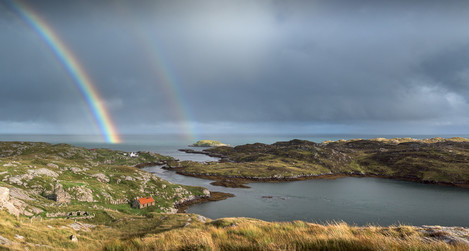 I’d be lying if I didn’t say Ansel Adams had a huge influence too, it’s often said and may sound like a cliché but his work is a must see for any landscape photographer and I often sit with a glass of red looking through ‘Ansel Adams 400 Photographs’ where I find it hard to get past his ‘Aspens’ from New Mexico, I love the lines the tones and the subtle reflective light on the trunk of the Aspens. I’m also a fan of portraiture and street photography, with Oscar Marzaroli’s ‘Glasgow’s People’ and Harry Benson’s ‘Photographs’ particular favourites.
I’d be lying if I didn’t say Ansel Adams had a huge influence too, it’s often said and may sound like a cliché but his work is a must see for any landscape photographer and I often sit with a glass of red looking through ‘Ansel Adams 400 Photographs’ where I find it hard to get past his ‘Aspens’ from New Mexico, I love the lines the tones and the subtle reflective light on the trunk of the Aspens. I’m also a fan of portraiture and street photography, with Oscar Marzaroli’s ‘Glasgow’s People’ and Harry Benson’s ‘Photographs’ particular favourites.
But in the last 2 years where I’ve been on this Landscape whirlwind the books and photographers that have driven me forward and inspired me in my constant desire to develop my photography are many but to name a few books in particular, Dav Thomas ‘With Trees’, Colin Prior ‘High Light’, Marc Wilson ‘The Stand’ and all the work in LPOTY and SLPOTY books. Most recently though one book has stood head and shoulders above the rest in inspiration and it is ‘This Land’ by Joe Cornish & Roly Smith. As soon as I opened it and saw the first few images I realised this is going to be one book I go back to for years, to recharge my aspirations.
The stand out theme to me is the strength of the landscapes in Portrait format. Greg Whitton has often kindly advised me about using portrait but seeing the power of these very natural images has only reinforced his advice which I do my best to put into practice a lot more now. One last mention has to go to Doug Chinnery who has been extremely helpful, kind and hugely encouraging both on and away from his workshops, giving me the belief to be confident in what I want to do with my photography, emphasising that photography should be made for the photographer himself and no one else and certainly with no limits.
Can you choose 2-3 favourite photographs from your own portfolio and tell us a little about them?
Winters’ Stand
My first image ‘Winters’ Stand’ I particularly like because of the manner it was taken. I had photographed this tree before when it had a smaller neighbour still standing next to it. It has always appealed to me, but I had struggled to separate it from the background as it sat on the North bank of Loch Chon in The Trossachs, Scotland. On this occasion, I was returning home from an early wander further up towards Loch Arklet and Loch Katrine in early February of this year. There was some lying snow higher up, but it was mostly passing sleet that was falling this low. As I was driving back towards Aberfoyle after being disappointed with what I had captured, I looked over as I passed this tree again and noticed its smaller sibling had fallen and snapped high in it’s trunk probably as a result of one of the previous winter storms.
I stopped and got out to quickly take a snap but realised one of the many passing showers was coming in, and it appeared to be snow or sleet. I ran back to a slightly better vantage point and shot handheld with my 70-200mm. With the wind and poor light, I had to bump the ISO way up to 3200 and shoot at f4. I fired off a few shots and ran back to the car as the thick sleet soaked me. When I got home and processed the image, I started to like it, especially liking the mix of grain and sleet complimenting each other. It had to be mono in my mind, and a quick conversion confirmed it. So this image reinforced that you should switch off as you never know what awaits round the corner.
Crooked
My second image is one that highlights the benefit of my day job. This is a location near Beattock Summit I would have been very unlikely to every come across, hidden along a small dead-end farm road that requires crossing the west coast mainline at a small crossing. I had passed it for years and seen different conditions, but frustratingly it was never when I was off work and out shooting. I did visit once before in late spring 2015 which allowed me to get a good look around and see where could be best to shoot if I got back in the right conditions.
So one morning in mid-February 2016 snow was falling in South Lanarkshire, and I had a list of locations I wanted to try and get to, and this was high on that list. I got there and got set up just as another passing flurry was falling and giving the place a fresh dusting. The snaking wall was my focal point, and I moved around slightly to find what I felt was a complimentary composition that would incorporate the Scots Pine. As I settled a small flock of sheep must have heard the farmer over the hill and decided to move quickly through the open gate. Knowing this could only add interest to the image I grabbed the opportunity and fired a few more shots. The snow stopped falling shortly after this, and a thaw began, leaving the scene a lot less appealing, so the timing was kind to me on this occasion.
Holy Water
My 3rd image reinforces the need to explore your local area. This was shot less than a mile from my home just off a small back road to East Kilbride in South Lanarkshire that I had driven for years. Since I have focused my photography on the Landscape over the last 2 ½ years, I often struggle to get time to venture far afield with the commitments of family life. So when I get the odd hour I have found myself exploring local woods and marshlands.
This particular morning in late September, the forecast had promised some light mist, and I didn’t have much time so went to some local fields with woodlands on their boundary. I got a few shots I liked, but as I explored more, I heard some water running. On investigation, I stumbled upon this small waterfall into a local burn, surrounded by a small gorge with steep rock sides. The rising mist had filtered in through the foliage and created some nice light trails that gave shape and direction to this shot. It is a location I have realised suits sunset better and a little later in the year when more leaves have fallen to allow just a little more light in from the opposite direction as here.
How easy – or difficult – do you find it to fit your photography around work and other commitments? When you travel for work, are you able to devote any time to either photography or researching new places?
With two girls under 8 and working shifts at extremely odd times, my very understanding wife is extremely lenient in giving me some time to get out. Although most of my work is done while they are all fast asleep as I sneak out early morning making sure I’m in before they rise and need to get ready for school, and my wife can get off to her work. It’s a constant challenge, and the majority of my weekly stuff is done close to home, where I have been amazed at the beauty I have blindly passed, sometimes daily before I began to see the landscape differently. I try to arrange at least a full day away every so often, but it can be hard, although I did manage two separate weeks away on Doug Chinnery workshops to the Cairngorms and Harris & Lewis last year.

